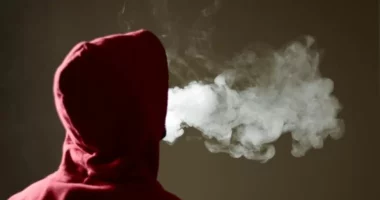We are deep into the awards season, and one film is beginning to garner a great deal of attention and looks set to pick up more than a few statuettes. Perhaps surprisingly, the movie in question is not in the English language but has still managed to pick up a nod for the Best Picture Oscar at the upcoming Academy Awards while also being an almost certain winner in the Best International Feature Film category.
Edward Berger’s 2022 adaptation of the hugely popular anti-war novel All Quiet on the Western Front, written by Erich Maria Remarque in 1929, has wowed viewers and critics alike, and that’s all the more impressive when you consider the history and significance of the source material and previous attempts to translate it to the big screen.
In 1930 the first full-scale adaptation of the book was released and received rapturous acclaim everywhere around the world, bar Germany where Adolf Hitler and the Nazi party were very much opposed to what they saw as the anti-German rhetoric of the movie.
The film, as with the book, follows the torturous journey of a young German soldier, Paul Bäumer, who enlists in the German army with his friends in the closing period of World War One.
A TV movie was released in 1979, which picked up Golden Globe and Emmy awards, and it took over 40 years for another production to take the challenging task of once again bringing the book to the screen.
Oscar Favorite
The German production of the movie looks set to win big during the awards season and has been nominated for an astonishing nine Oscars, which is a feat unparalleled when you consider it’s not an English-language movie.
Many have commented on the sheer scale of the spectacle, achieved without the need to use stock video or library footage, but also the personal tales that are brought to life by Berger in his production.
The film certainly does not pull any punches when it comes to highlighting the crushing brutality of war, the central tenet of the book, and it’s a hard film to watch but one that doesn’t seek to shock just for the sake of it.
The futility of war is obviously another key component of All Quiet on the Western Front, and its opening scene pays testament to that fact. For near on eight minutes, there are no words spoken, simply a pictorial representation of the horrors of war.
The camera takes the audience on a journey through death and destruction as the battle is conducted in the background.
As well as showing just how war can dispirit the mind and soul, it can also be a very confusing state to be in, and a great deal of what occurs is somewhat blurred as if to accentuate that state.
The understated but hugely effective performance from Felix Kammerrer as Baumer is equal parts haunting and devastating, and the cast as a whole works seamlessly with director Berger and cinematographer James Friend to make this piece of work so illuminating.
The movie was released on Netflix though many have rightly pointed out that to see the film in all its majesty, viewers would be best off going to a cinema screening, such is the scale and expansive nature of the production.
Grand Production
The overall production of All Quiet on the Western Front is on the epic scale of things, especially in terms of a European release, and much of the film was shot in the Czech Republic. Early scenes are filmed in Prague, which filmmakers commonly use due to the historically accurate buildings and architecture.
The city also houses the Barrandov Studio, which has been used by many big productions in recent years, from Daniel Craig’s first run as James Bond in Casino Royale to Jojo Rabbit.
Battle scenes were filmed in Milovice and other Czech villages and towns. The All Quiet on the Western Front production also made good use of a Soviet-era airport, where they shot much of the trench action scenes.
On the reasoning and suitability of shooting in the Czech Republic, Berger has stated;
“So we started in Prague, in and around Prague, we built the trenches in a big airfield, about an hour outside of Prague,”
“So we dug the trenches there and built a crater and the other craters and mounds and the burnt trees.”
“That was basically around Prague and for the main reason that Prague has very welcoming and great crews, but also it is slightly more economical to shoot there,”
“It’s very hard to find that in Germany where everything is renovated or in France where the actual historical locations would be. So Prague just felt like, after all the scouting, felt like the right place to go.” Berger added.
Some scenes were also filmed in Belgium and Germany, but the Czech Republic was responsible for most of what you see on screen.
The film cost a rumored $20 million to shoot, which is peanuts when compared to most Hollywood releases, and the success has proven that that production was a huge success and one that is sure to lead to critical successes both in Hollywood and beyond.
It continues to be a big success on Netflix, topping their rankings for successive weeks, proof, perhaps, that the streaming giant has a far more rounded audience than many might initially conclude.
To date, Netflix has secured a total of 16 Oscars, and you can expect that total to increase by more than a few digits once the Academy Awards come to a close on March 23rd.
Bob Andrews is a content editor for Landscape Insight, With a background in journalism, Bob brings a unique perspective to his role as he oversees the creation and publication of a wide range of content, including articles, podcasts, and videos. You can reach Bob at – [email protected] or by Our website Contact Us Page.








